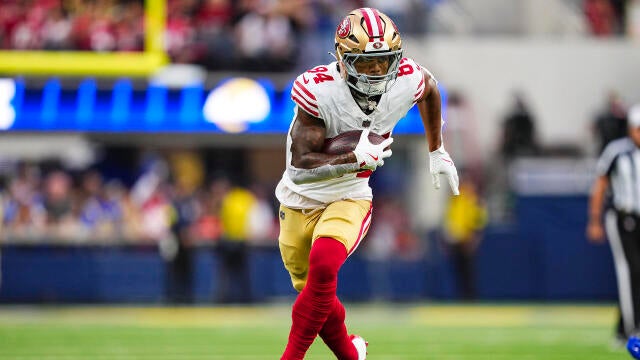49ers Rookie Caught Partying After Hours — Released Overnight in Ruthless Call

San Francisco’s culture is defined by resilience, accountability, and an unrelenting drive to raise the team’s standard. After a dramatic Week 5 win that pushed the 49ers to 4–1, the team has been tested not only by opponents but by a wave of injuries affecting nearly every position group. Yet even under the strain of a depleted roster, leadership continues to enforce
Every 49ers player, especially rookies, is reminded daily that wearing red and gold is about more than talent — it’s about living up to a dynasty’s standard. This week, that standard was tested in spectacular fashion. The incident unfolded when a rookie slipped out after curfew to host a late-night birthday party, defying camp rules and team expectations. The decision was discovered quickly, and leadership responded without hesitation.
General manager John Lynch made the message unmistakably clear in a statement: “I don't care if it's a birthday, a celebration, or just one night to feel free — the moment you walk away from the rules, you walk away from this team. In San Francisco, we don't make emotional cuts. We make cultural decisions. That's how you protect The Standard.”

According to team sources, rookie defensive back Jaylen Mahoney was found to have violated team rules after he slipped out late Tuesday night to attend an after-hours party, directly breaking the curfew established by head coach Kyle Shanahan and his staff.
After not being selected in the 2024 NFL Draft, Mahoney signed with the San Francisco 49ers as an undrafted free agent. Known in college for his toughness and versatility, he arrived in San Francisco determined to earn a spot. In training camp, he flashed in moments — a sharp read here, a well-timed tackle there — but the road ahead was steep. He lived on the bubble, battling through roster cuts and rotating between practice reps and scout-team duties. His journey was fragile, one small mistake away from collapse. That collapse came swiftly, as his release was final

For San Francisco, culture is non-negotiable. The 49ers’ leadership and coaching staff have consistently emphasized accountability, and this move sends a message to the entire locker room: no player is bigger than the team. The decision underscores
As the team prepares for Week 6, San Francisco’s message is unchanged — wearing red and gold means living up to the legacy. Every player is reminded: “The Standard is the Standard.” No exceptions.
Former Eagles Star with Two Super Bowl Rings Returns to Philadelphia After Announcing Retirement in the Offseason, Right After the Win Over the Vikings

Philadelphia, PA — Right after the win over the Minnesota Vikings, the Philadelphia Eagles sent the locker room buzzing by confirming the return of former cornerstone Brandon Graham. Just a few months after announcing his retirement in the offseason, the defensive icon of the City of Brotherly Love has decided to lace up again as the team seeks additional edge pressure and a leadership voice for a pivotal stretch of the season.

Graham returns to a wave of excitement tempered by realism: he missed training camp and the first half of the season, which means he’ll need a carefully designed ramp-up plan. The coaching staff is expected to stage the workload day by day, monitor his recovery after each session, and then gradually increase his snaps from a rotational role. The immediate goal is to help him regain contact rhythm, hand feel, and takeoff timing in short areas.
From a football standpoint, Graham’s presence immediately gives the Eagles a disciplined leverage player at defensive end, a reliable set-the-edge option on early downs, and a veteran who can execute interior stunts/twists within pressure packages. While no one should expect a sudden surge in sacks, his biggest value lies in tightening the perimeter of the defense, forcing runs back into traffic, and elevating the unit’s collective pursuit.
In passing situations, Graham will likely be used selectively by package: rushing from 5- or 4i-technique and syncing with interior defenders to create steady pressure built on power and timing rather than pure speed. His savvy—reading drop points and triggering counter moves—has been missing at times as injuries thinned the edge rotation.
The locker-room dimension may be even more important. For years, Graham has been a standard-setter for practice intensity and mental consistency. For the young edge group, a teacher on the field—someone who calibrates eyes, shoulders, and hands in rhythm—can shorten the learning curve more than any meeting.
Procedurally, the two sides are expected to begin with standard medicals, then finalize a short-term deal through the end of the season with flexible structure: veteran minimum base plus incentives tied to snaps, benchmarks, and team results. From a roster-management angle, the Eagles will need to open a spot on the 53 (IR/waive/practice-squad adjustments) before activating Graham.
The upcoming schedule leaves little room for error, which is why a veteran who already speaks the language of this system—no playbook “translation” required—is such a snug fit. Graham’s return doesn’t preclude additional reinforcements; it positions the Eagles to strengthen depth internally while keeping options open if the trade market presents value.
Big picture, this is a low-risk move with a high ceiling for cultural and organizational impact. If the ramp-up progresses smoothly, the Eagles will have a dependable edge-setter right as the season enters its series of stress tests. And for Philadelphia fans, Graham’s message says it all: he can’t yet leave football—or this city—and the next appointment is back on the field.





